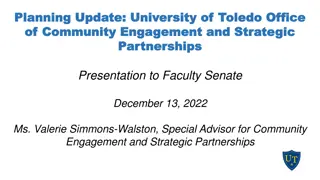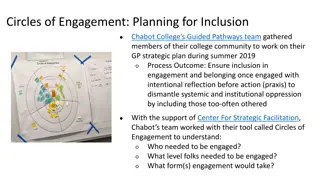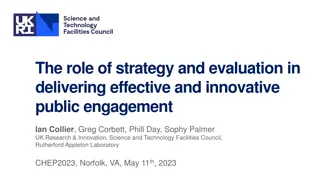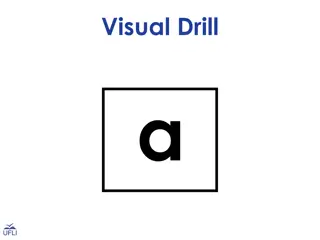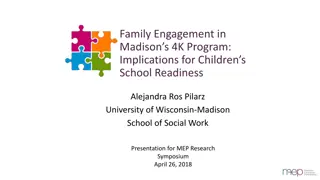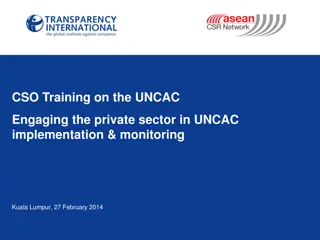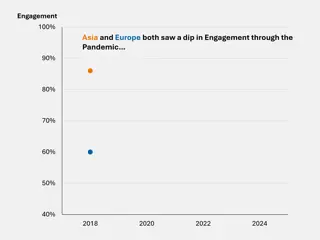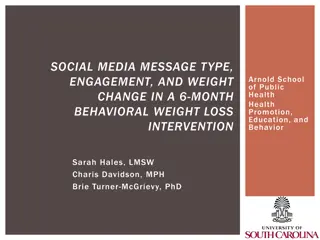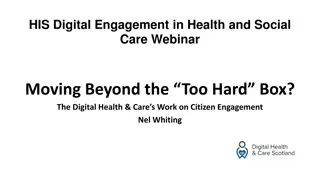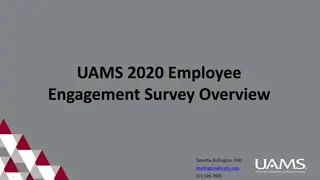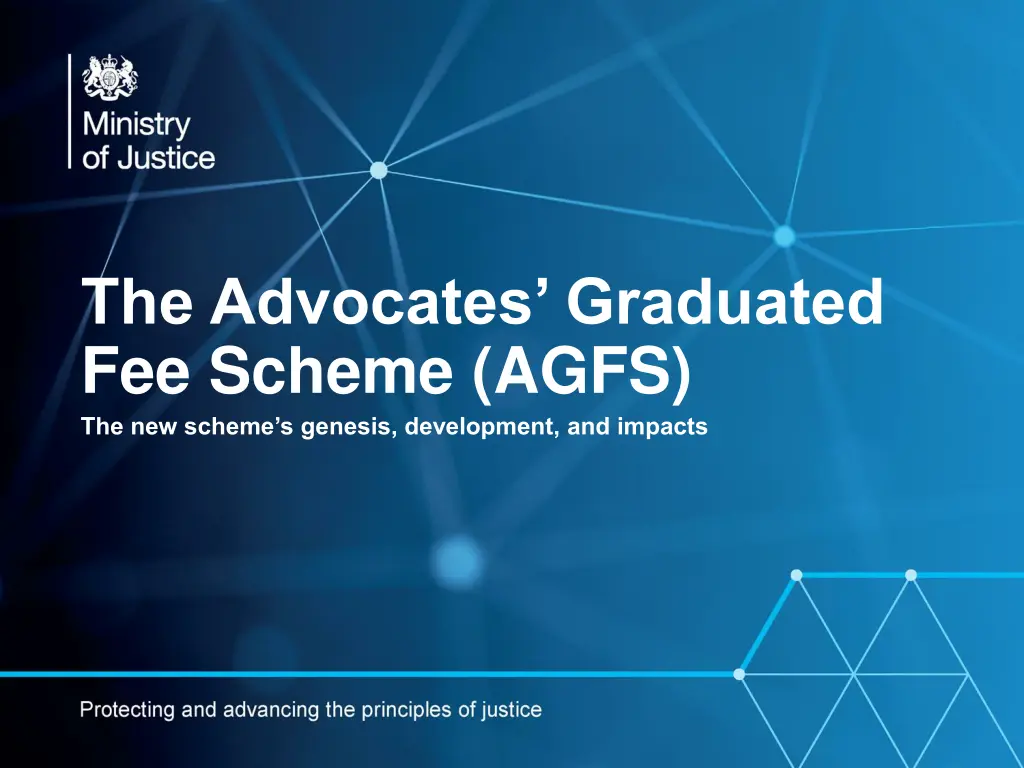
Origins and Impacts of the Advocates Graduated Fee Scheme (AGFS)
Explore the origins and development of the Advocates Graduated Fee Scheme (AGFS), initiated in collaboration between the Ministry of Justice and the Bar. Learn about the guiding principles, consultation proposals, and the significant impacts of this reformed scheme on the legal sector. Stay informed about the reforms shaping the landscape of advocacy work and legal aid.
Uploaded on | 0 Views
Download Presentation

Please find below an Image/Link to download the presentation.
The content on the website is provided AS IS for your information and personal use only. It may not be sold, licensed, or shared on other websites without obtaining consent from the author. If you encounter any issues during the download, it is possible that the publisher has removed the file from their server.
You are allowed to download the files provided on this website for personal or commercial use, subject to the condition that they are used lawfully. All files are the property of their respective owners.
The content on the website is provided AS IS for your information and personal use only. It may not be sold, licensed, or shared on other websites without obtaining consent from the author.
E N D
Presentation Transcript
The Advocates Graduated Fee Scheme (AGFS) The new scheme s genesis, development, and impacts
Origins and development Origins Development In 2015, the Ministry of Justice (MoJ) agreed to work with the Bar to develop a reformed AGFS. In 2015, the Bar Council published its own proposals for a reformed AGFS. The MoJ considered that the scheme was in need of reform for several reasons. Since the scheme was last reformed in 2007, there have been considerable changes to the way criminal cases are run and the way that evidence in them is served. As well as drawing on these proposals, the design and development of the new scheme was informed by a series of discussions with a joint working group, comprising members of the Bar and solicitor advocates. The development of the new scheme was also overseen by a senior group comprising: Most importantly, the MoJ believes that Pages of Prosecution Evidence (PPE) are no longer the most effective way of assessing how much work an advocate needs to do in an individual case, and how much they should be paid. the Chair and Vice Chair of the Bar Council; the Chair and Vice Chair of the Criminal Bar Association (CBA); Over the last few years, there have been significant changes in the way that evidence is served. Electronic evidence, including video footage, and mobile phone and hard-drive data, is increasingly served. Converting this material into pages no longer fully reflects the work required of advocates in the Crown Court. the Bar Circuit Leaders; and MoJ policy officials and the CEO of the Legal Aid Agency (LAA). The newscheme s development was undertaken on an open book basis, with complete transparency around data and spend. The MoJ shared data with an academic consultant to the Bar Council. The MoJ also considered the existing arrangements to be unnecessarily complicated, for advocates and administrators alike. The AGFS also needed to better complement wider criminal justice system reforms such as those being put in place as a result of Sir Brian Leveson s Review of Efficiency in Criminal Proceedings and the Digital Case System. While development of the scheme took over 2 years, the same representative groups remained involved. . 2
Guiding principles and consultation proposals Guiding principles Consultation proposals The design of the new scheme was underpinned by a set of guiding principles. As far as possible, the new scheme should: Having carefully considered the views of all those involved, the MoJ consulted on proposals for a reformed AGFS in January 2017. The key proposals were: be cost neutral (using 2014-15 as a baseline ); a modernised and simplified formula for calculating fees, designed to significantly reduce reliance on PPE and more accurately reward work done; minimise reliance on PPE; reflect, and pay for, the actual work done; to support this, a much more nuanced and sophisticated offence categorisation system that would build in relativities between offences based on their complexity; support getting the right outcome in individual cases, and remove as far as possible any perverse incentives; unbundling of the graduated fee to pay for most hearings individually, providing increased certainty for advocates and ensuring more accurate payment for work done; and be consistent with and, where appropriate, support wider reforms for example, the Better Case Management programme and wider Criminal Justice System reforms; and a greater focus for spending on in-court advocacy and more complex trials, where more advocacy work is undertaken, over less complex guilty plea hearings. place no extra administrative burden on Her Majesty s Courts and Tribunals Service (HMCTS), the LAA, and practitioners than the current scheme and ideally a reduced burden. In line with the guiding principles, the new scheme was designed to be cost neutral against 2014-15 caseloads, where actual spend was 213m. While there were calls for further investment in the scheme, the working group and senior group agreed to proceed with the development of a reformed AGFS that aligned with these principles, including the principle of cost neutrality. Alongside the consultation paper, the MoJ published a comprehensive Impact Assessment showing the anticipated impacts of the proposed scheme. 3
The consultation response The MoJ received over 400 consultation responses. There was support for the proposed scheme, especially from the Bar leadership who had been significantly involved in its development. When the consultation was launched, the then Chair of the Bar Council, said: The suggested scheme is a fairer way of rewarding advocates for their work It will better protect newly qualified advocates who under the vagaries of the present scheme are at the mercy of events not under their control. The new scheme is also a positive example of the Ministry of Justice participating in constructive dialogue with the profession through the Bar Council, Criminal Bar Association, Circuits and Young Bar In a joint statement, the Bar Circuit Leaders said: As the Circuit Leaders over the period of the negotiations, it is our shared view that we should support the implementation of this proposed scheme And the then Chair of the CBA said: the CBA believes that the new scheme is a great improvement on what has gone before, and we should at least give it a cautious welcome as a step in the right direction That said, there were concerns from the Bar leadership and consultees about the amount of money in the proposed scheme. There was particular concern about the potential impact of the proposed scheme on junior advocates. Consultees believed that some of the proposed reductions to fees for less complex work would have a negative impact on junior advocates. There were also some valuable suggestions for improvements. 4
Final scheme design and implementation Final scheme design Implementation Although the basic architecture of the scheme did not radically change post-consultation, the MoJ made several improvements to the original consultation proposals in light of consultees concerns. By summer/autumn 2017, the MoJ, with the agreement of the Bar leadership, proceeded towards implementation. This involved the MoJ drawing up the necessary legislation and finalising the consultation response. Given the significant concerns about the potential impact of the proposals on junior advocates, the MoJ focused on protecting junior advocates whilst still ensuring accurate payment for work done. The key changes included: The MoJ published its consultation response, and introduced legislation to implement the new scheme, on 23 February 2018. Again, the expected impacts of the reformed scheme were published in a comprehensive Impact Assessment. increasing fees for a number of appearances often undertaken by juniors, reversing the initial proposal to reduce these fees, as well as remunerating each standard appearance separately; The new scheme came into force on 1 April 2018. moving offences and adjusting bands within the new offence categorisation system to increase fees for a range of cases that are more frequently covered by junior advocates; and abandoning the unpopular policy on how to differentiate between early and late guilty pleas. No fees were reduced following consultation. As highlighted on Slide 7, these changes mean that the final scheme design would cost 9m more than the scheme consulted upon. These changes were made following extensive engagement with the senior group. 5
Reviewing the new scheme At consultation, many respondents understandably requested a review mechanism so that the operation of the new scheme can be assessed. The MoJ recognises the need for continued, constructive engagement with the professions to ensure that the new scheme is working as intended, and has committed to undertaking a full appraisal of the reforms. Given the need to allow the changes to reach steady state before making an informed assessment, the MoJ will undertake this appraisal between 18 months and two years following implementation. It will take at least 18 months for a significant and representative proportion of cases under the new scheme to be completed, so it would not be possible to assess the new scheme before this point. The MoJ will work closely with the professions to determine the scope and timescales for this appraisal, and the appraisal will be undertaken with complete transparency around data and spend. Prior to this appraisal, the MoJ will share relevant data with the profession in real time. In the interim, the LAA would welcome ongoing feedback on the new scheme. You can provide this by emailing servicedevelopment@justice.gov.uk. 6
Estimated costs of the new scheme The scheme consulted upon was designed to be cost neutral against 2014-15 AGFS caseloads, where actual scheme expenditure was 213m. This means that the scheme consulted upon, when modelled using 2014-15 caseloads, was designed to cost the same as actual spend that year. The changes the MoJ made following consultation increased modelled expenditure on the new scheme. As a result of these changes, the new scheme would cost 9m more than the scheme consulted upon. These changes also mean that the new scheme is broadly cost neutral against 2016-17 AGFS caseloads, where expenditure at the time of the scheme s redesign was 224m. In addition to the extra costs incurred by the post-consultation scheme changes, the MoJ has accepted a financial risk that is likely to lead to an additional 4% expenditure on the new scheme each year. Based on scheme spend over the past three years, the MoJ estimate that this will likely mean further expenditure of another c. 9m per year. This risk arises because when the MoJ modelled the costs of the new scheme, it was assumed that the offence billed for under the old scheme would be the same as the offence billed for under the new scheme. However, this is unlikely to reflect what will happen in practice as advocates typically bill for the highest value offence, to ensure fair remuneration for their work. Under the new scheme, the highest value offence may be different to that under the old scheme. If it is assumed that the advocate bills for the highest value offence under the scheme, the MoJ estimate that this would cost an extra 4% or c. 9m per year. Further details of this analysis can be found in the Impact Assessment that was published alongside the consultation response. 7
Estimated impact of the new scheme on individual advocates The MoJ has undertaken an analysis of the expected impacts of the new scheme on individual advocates. As Figure 1 shows, the MoJ estimates that around two thirds of advocates would have benefited from the new scheme, had it been in place in 2016-17. This analysis, and the analysis on Slide 9, does not include the likely additional 4% (c. 9m) per year expenditure arising from the risk associated with the new scheme. Modelled Percentage Change in Figure 1: Modelled percentage change in advocates fee payments, 2016-17 Advocates' Fee Payments 2016-17 500 450 400 Number of advocates 350 300 250 200 150 100 50 0 Advocate with lower modelled fees in planned scheme Advocate with higher modelled fees in planned scheme Source: LAA administrative data, 2016-17, based on the LAA July to September 2017 statistical release 8
Estimated impact of the new scheme on different types of advocate and different offence categories Impacts by advocate type Impacts by offence category The MoJ has modelled how, on average, the reformed scheme would have impacted expenditure on different types of advocate (QC, Lead Junior, Led Junior, and Junior Alone) over the three years 2014-15 to 2016-17. The MoJ has also modelled how, on average, the reformed scheme would have impacted expenditure on different offence categories over the three years 2014-15 to 2016-17. This analysis suggests that: This analysis suggests that: the majority of offence categories would have seen an average increase in expenditure; self-employed Juniors (Alone), who accounted for 63% of all claims, would have seen an average increase of 2%. adult sexual offences would have seen an average increase of 17%; self-employed QCs, who accounted for under 1% of all claims, an average increase of 8%; fraud offences an average decrease of 14%; self-employed Lead Juniors, who accounted for under 1% of all claims, an average reduction of 9%; murder/manslaughter offences an average increase of 13%; self-employed Led Juniors, who accounted for under 1% of all claims, an average reduction of 1%; standard offences an average increase of 9%; serious violence offences an average increase of 6%; and employed Juniors (Alone), who accounted for 35% of all claims, an average increase of 6%; and drugs offences an average decrease of 3%. employed Led Juniors, who accounted for under 1% of all claims, an average increase of 1%. In line with the principles underpinning the new scheme, the MoJ believes these changes will ensure advocates remuneration better reflects the actual work done in Crown Court cases. 9
Resources The MoJ s consultation proposals and consultation response, as well as Impact Assessments, are available at: https://consult.justice.gov.uk/digital-communications/reforming-the-advocates-graduated-fee-scheme/ Guidance on the new scheme, including a Frequently Asked Questions (FAQ) document with case examples, is available at: https://www.gov.uk/government/publications/crown-court-fee-guidance A fee calculator for the new scheme is available at: https://www.gov.uk/government/publications/graduated-fee-calculators The MoJ and LAA are always happy to speak to people about the new scheme. If you would like to get in touch, please email: servicedevelopment@justice.gov.uk 10



